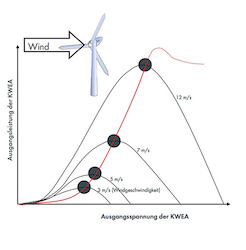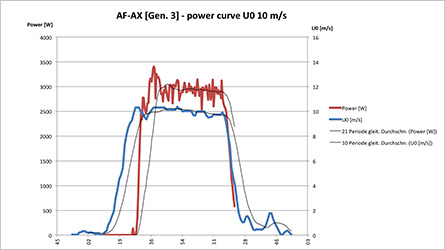In developing our technology of the Aeroflexible Surface further we decided to introduce the technology in the Wind Energy field at first. It turned out that there are currently the best market indicators and the biggest potential markets. We have low regulations and other conditions making it to a businesss environment with low market entry barriers. Therefore we currently develop a brand named AF-AX wich will in order once become an own company when all things are set. Feel free to browse to the brand's site.
So Far when developing the aeroflexible surface we need to provide clear evidence that the principle is working not only on small model planes but can be upscaled to bigger applications such as wind energy aso. Further the principle has to outperform classical rotor blade designs in that way, that a solid business model can be build upon.
Under this motto we participated several business plan competitions such as the "münchner Businessplan Wettbewerb" to get a profound feedback on our model.
To reach the technical performance needed and to make certain developments to gradually adapt and improve our surface, we built a mobile testing station to test our wind turbine perfomance with our blade technology. The reason building a mobile testing station was simply costs. It's by this way much cheaper to make measurements on certain windspeeds than going into a wind tunnel big enough to contain a windturbine with 3m span.
Construction:
The idea was to create a rig which can carry a wind Turbine of 2.5 kW, so we created plans within Rhino. Based on the construction Plans we gathered offers from several Metal construction companies. Finally we decided to build the base by ourselves with wood. Only the pole in the middle was manufactured from iron. This was our luck. Because it turned out that constructing the base with wood made it much easier to later add on other extensions for our inverter module and electric loads.
Electric Wiring
Getting an Wind Turbine to work is not that simple. Usually an inverter regulates the current according to the revolving speed based on a programmed curve. In combination with the voltage that comes from the Generator it represents the Power generated from the turbine and usually fed in to the local power grid. In our case we have an exception because our inverter is not connected to power grid. In that case most inverters refuse to work. So we had to find an inverter which is able to operate in that mode. Finally we found the inverter Aeocon 4000 which was also recommended by the manufacturer of our wind turbine for our purpose. Due the generated power couldn't be used by a local grid we attached a load which was burning the generated power into heat. The inverter also had a certain connection for the excessive power to connect a separate load.
After setting up the cable connection our inverter was ready to record power outputs.When running our tests driving the turbine around we tried to hold certain speeds to gain one measurement point. The more constant we could hold the speed the better our measurement point became resulting in low standard deviations (left image below). After the tests with our first rotor-blade prototype we gained a power curve which was rather dissappointing (right image below, blue curve). The surface construction could not resist the strong forces occured and was destroyed very fast due underestimated centrifugal forces. Our next generation surface did cope much better with the centrifugal forces. So it behaved also with the power curve which was almost reaching the orginal configuration. But still wie didn't see the effects we wanted to see. Another modification of the surface now brought us a satisfying result with astonishingly high outputs. So good that we have now a certain explaination Problem to not become unserious. The next big task awaits us: We now have to find out if these values are really correct and measured properly. A comparison with orginal rotor blades so far showed that our rotor blade prototype supersedes at least the orginal. Other absolute references have to be determined exactly with more precise instruments or a better testing environment.
A recent repeating of the testing with the latest prototype generation couldn't so far clarify the question due bad weather conditions. Thus have to measure Further to finally gain serious results.








